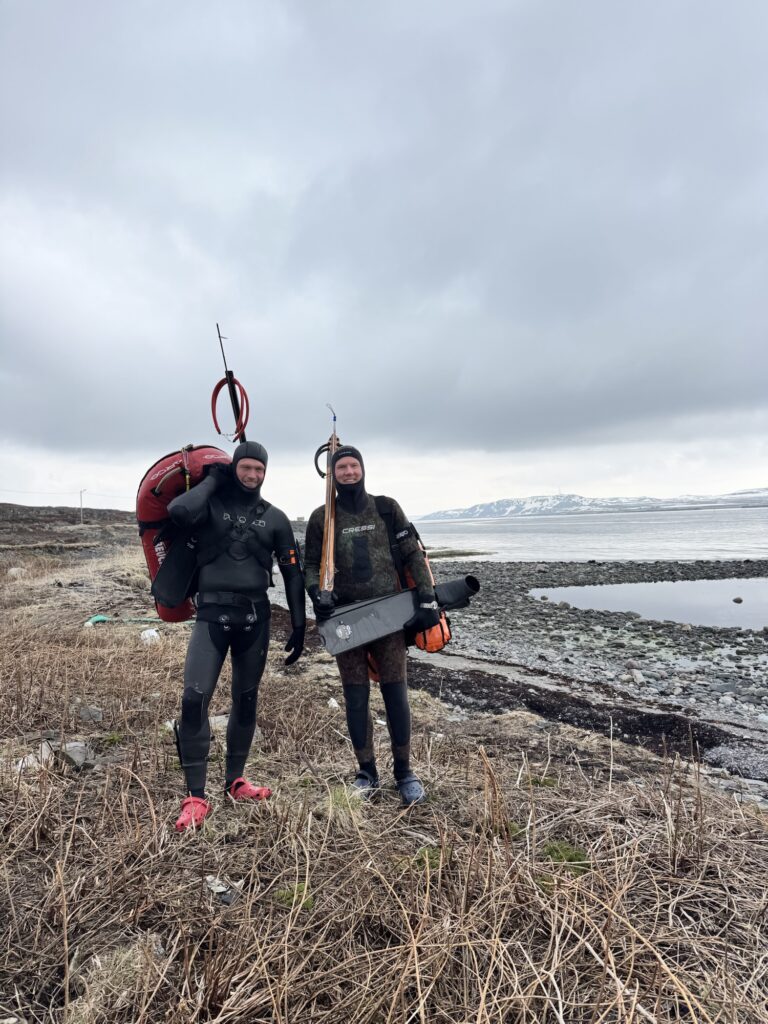Spearfishing Buoy: Safety, Signaling & Essential Gear Transport
In spearfishing (underwater hunting with a speargun or spear), the buoy is a central piece of equipment. It serves not only as a safety device, but also for organizing gear and communicating with boats or other water users. This article covers the functions, types, uses, and selection criteria of spearfishing buoys.
More Basic Questions?

Inhaltsverzeichnis
1. Functions of a Spearfishing Buoy
The spearfishing buoy fulfills several essential tasks:
- Safety function: It signals on the surface that a diver is below – usually with a bright orange or red color and/or the diver-down “Alpha” flag (white-blue).
- Transport aid: Connected to the diver via a floatline, it enables carrying:
- Speargun(s)
- Spare shafts
- Fish (on a stringer or fish holder)
- Drink bottle (ideally sugary, e.g. cola)
- Anchor point: In strong currents or long sessions, the buoy can serve as a resting or holding point.
- Emergency signal: Many models have mounts for flashlights, whistles, or flares. Some also include inflatable backup chambers or integrated pockets.
2. Types of Spearfishing Buoys
Inflatable buoy
Lightweight, compact, and great for travel. Can be deflated and folded easily. Less durable against rocks or heavy use.
Foam buoy
Solid float (usually EVA or Styrofoam), very durable and permanently buoyant. No pump needed. Slightly bulkier to transport.
Torpedo buoy (Torpedo Float)
Streamlined shape – reduces drag when towed. Popular with freedivers as it glides easily through currents.
Flag buoy (Surface Marker Buoy)
Comes with an integrated diver-down flag (usually Alpha or red-white). Highly visible – ideal for busy coastal waters or when legally required.
3. Floatline or Reel – Connection to the Diver
The connection between diver and buoy is made either via:
- Floatline: Floating rope (usually 10–30 m), elastic and visible (orange or yellow). Advantage: very stable and rarely tangles.
- Reel: Spool attached to the speargun – useful for deep dives or wreck dives. Usually used together with a floatline, not as a substitute for the buoy.
4. What to Attach to the Buoy?
A well-prepared spearfisher attaches to the buoy:
- Stringer or fish holder
- Spare speargun or shafts
- Drink bottle (in waterproof bag)
- Signal flag (Alpha flag / red flag with white diagonal stripe)
- Optional knife, buoy weight, signal light
5. Buying Guide: What to Look For?
When choosing a spearfishing buoy, consider the following:
- Buoyancy: Must remain visible in waves and carry attached gear.
- Color & visibility: Bright orange, red, or yellow; reflective strips and flag are beneficial.
- Durability: Tear-resistant materials (e.g., PVC-coated nylon or solid EVA).
- Attachment points: For stringer, lines, extra gear.
- Valve & sealing (for inflatables): One-hand operation, quick inflation.
Clear recommendation:
Good float, well-designed, available in various colors, reputable brand, harpoon attachment, rest station
Essential in my opinion to draw attention in an emergency – ideally have 2, one on the float and one on the diver!
Legal Notes
In many countries (e.g., Italy, Croatia, Greece), carrying a signal buoy while spearfishing is legally required. Divers are often not allowed to move more than 50 m away from the buoy. The use of an internationally recognized diver-down flag (e.g., Alpha flag) is also mandatory in many regions.
Conclusion
The spearfishing buoy is far more than just a float. It is an essential tool for safety, organization, and success in underwater hunting. Anyone who spearfishes regularly – whether from shore, kayak, or boat – should not skimp on the buoy and choose it as carefully as their speargun.



Pingback: Start/Learning Spearfishing - What do i need?